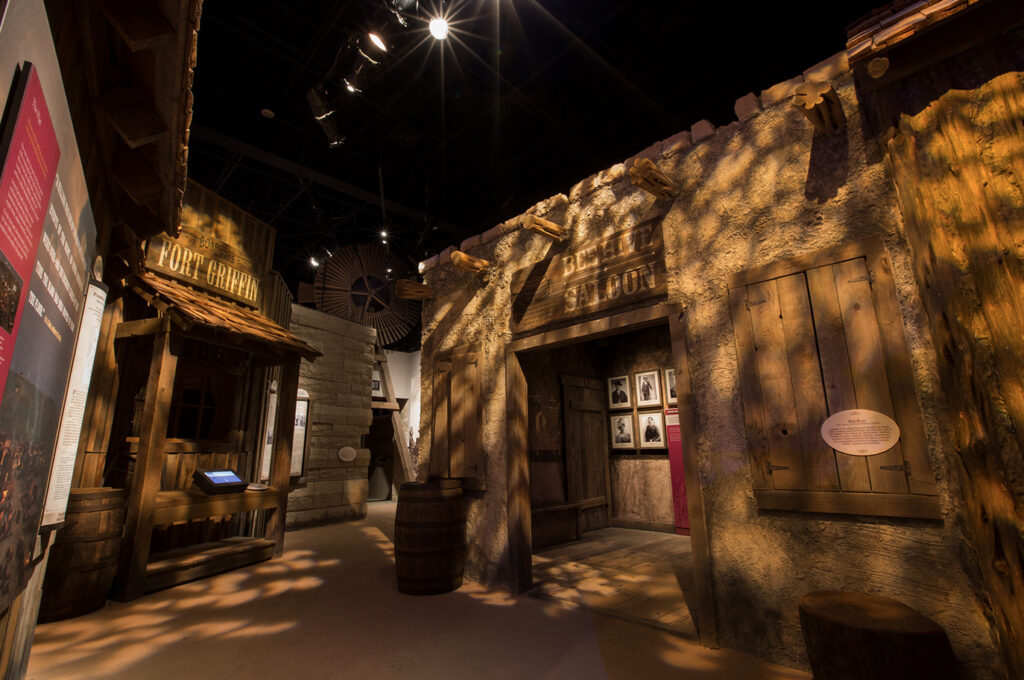Current Exhibits
Hours of Operation, Admission Prices, Our Address, and More
BLOOD & TREASURE
A twelve minute introduction to Frontier Texas


A Wild Land
13,000 years of culture smashed by the forces of this region
For almost 15,000 years before the Texas Frontier was settled, humans traveled through this region on foot. But this was no place to make a permanent home. It was a harsh land, and each day was a life or death struggle. Climate alternated between ice ages, and torrid heat and drought cycles. One culture after another disappeared from the ravages of weather, wild animals or human enemies. But around 1700, the Comanche, riding horses introduced to the New World by Spanish explorers, claimed this region as home. This wild and perilous land was about to get a lot wilder, and a lot more dangerous.
Comanche Empire
From the 1700s – 1800s, the Comanches dominated the Southern Plains
Riding on recently acquired horses, the Comanche hunted, traded, and made war across a huge expanse of the Southwest. Mobility, as well as economic and militaristic supremacy, made them the first culture to sustain dominance of the frontier Texas region. The Comanche were formidable enough to block European expansion into their homeland for over 150 years, a feat no other Native American tribe achieved. The tribe called themselves Numunah, simply “Our People.” The Spanish, however, called this region Comancheria––the Comanche Empire.


Buffalo Hide Trade
Winners and losers involved in the frontier’s first economic boom
Military
How the military moved from peacekeeping to warfare


Cowboys
From the prairies to railheads in Kansas
Settlements
Meet people, good and bad, who formed the frontier towns
As more soldiers, trail drivers, buffalo hunters and other pioneers came into the area, ramshackle settlements grew up on the frontier. Some settlements grew up around the frontier forts, while others developed as trading posts where buffalo hunters could sell hides and resupply their crews. These frontier outposts attracted everyone looking to make a buck––including legitimate businesspeople, gamblers, camp followers, prostitutes and other rough characters. Initially the towns were unorganized and dangerous – wild and wooly places where life was cheap. Living on the lawless frontier often gave people a calloused view of legality, equality and fairness. When their relevant economics faded, many of these towns settled back into the dust from which they had risen.


Experience Theater
From a thunderstorm on the prairie, to a shoot-out in a saloon
Guns of the West
Guns that shaped the wild frontier

